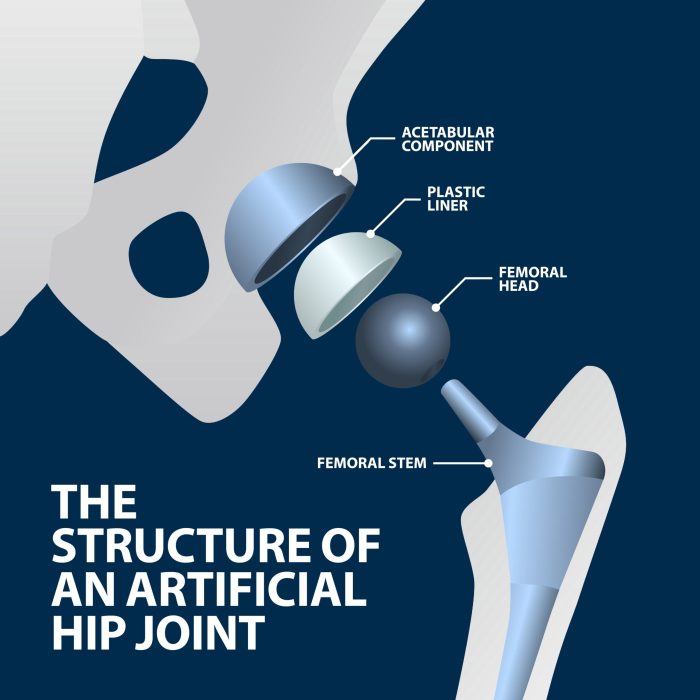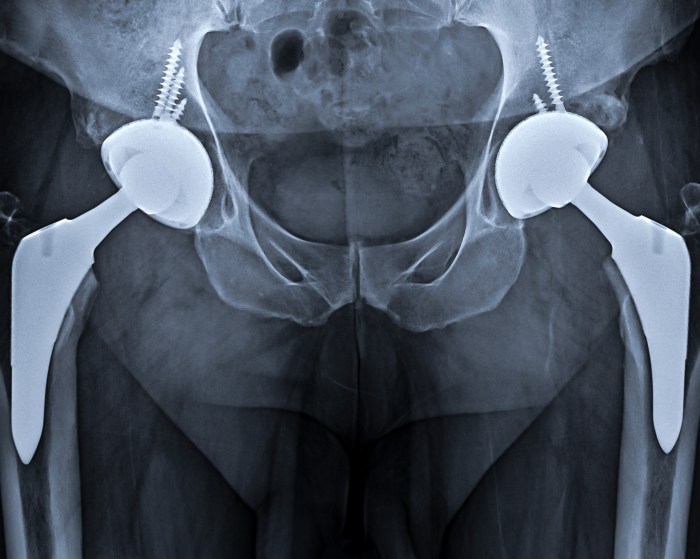Simulation Real Life 4.0 Total Hip Arthroplasty represents a transformative advancement in surgical planning and execution. By harnessing the power of simulation technology, surgeons can now gain unparalleled insights into the complexities of this intricate procedure, leading to enhanced surgical outcomes, reduced complications, and improved patient recovery.
This cutting-edge technology empowers surgeons to meticulously plan and rehearse surgical techniques, optimizing implant positioning, reducing surgical time, and minimizing potential risks. It also serves as a valuable educational tool, enabling surgeons to refine their skills and stay abreast of the latest advancements in THA.
Preoperative Considerations

Simulation offers numerous advantages in preoperative planning for total hip arthroplasty (THA). It allows surgeons to visualize and rehearse the procedure, identify potential challenges, and optimize surgical strategies. This can lead to improved surgical outcomes, reduced complications, and shorter operating times.
Types of Simulation Models
Various types of simulation models are available for THA, including:
- Physical models:These are three-dimensional representations of the hip joint and surrounding anatomy, used for hands-on training and preoperative planning.
- Computer-based models:These simulations provide a virtual environment for surgeons to practice surgical techniques and evaluate different implant options.
- Hybrid models:These combine physical and computer-based elements, offering a more realistic and interactive experience.
Benefits of Simulation, Simulation real life 4.0 total hip arthroplasty
Simulation in preoperative planning can provide numerous benefits, such as:
- Improved surgical planning and decision-making
- Identification and mitigation of potential risks
- Reduced surgical time and complications
- Enhanced patient outcomes and satisfaction
Intraoperative Applications
Simulation also plays a vital role in guiding surgical technique during THA. It allows surgeons to practice and refine their skills in a safe and controlled environment.
Role of Simulation
During surgery, simulation can be used to:
- Visualize the surgical field and plan the incision
- Identify and avoid critical structures
- Practice implant positioning and fixation
- Assess surgical progress and make real-time adjustments
Benefits of Simulation, Simulation real life 4.0 total hip arthroplasty
Intraoperative simulation can provide several benefits, including:
- Reduced surgical time and blood loss
- Lower risk of complications and revisions
- Improved implant positioning and alignment
- Enhanced surgical precision and accuracy
Postoperative Outcomes

Simulation can also contribute to improved postoperative outcomes after THA. It can help optimize rehabilitation protocols and assess patient progress.
Rehabilitation Optimization
Simulation can be used to:
- Develop personalized rehabilitation plans
- Monitor patient progress and identify potential complications
- Provide patient education and support
Patient Assessment
Simulation can also be used to:
- Assess range of motion and function
- Identify pain and discomfort
- Monitor implant stability and longevity
Future Directions

Simulation in THA is a rapidly evolving field. Emerging technologies and trends include:
- Augmented reality (AR) and virtual reality (VR):These technologies provide surgeons with a more immersive and interactive experience during surgery and preoperative planning.
- Artificial intelligence (AI):AI algorithms can analyze patient data and surgical simulations to predict outcomes and identify potential risks.
- Haptic feedback:This technology allows surgeons to experience the physical sensations of surgery, such as tissue resistance and implant stability.
Impact on THA
These advancements are expected to revolutionize THA by:
- Further improving surgical outcomes and patient satisfaction
- Reducing surgical time and complications
- Facilitating the development of new surgical techniques and technologies
Frequently Asked Questions: Simulation Real Life 4.0 Total Hip Arthroplasty
What are the key advantages of using Simulation Real Life 4.0 in THA?
Simulation Real Life 4.0 offers numerous advantages, including improved surgical planning, reduced surgical time and complications, enhanced training opportunities, and optimized rehabilitation protocols.
How does Simulation Real Life 4.0 contribute to better patient outcomes?
By enabling surgeons to meticulously plan and rehearse surgical techniques, Simulation Real Life 4.0 reduces surgical time, minimizes complications, and optimizes implant positioning, leading to improved patient outcomes and faster recovery.
What are the future directions for Simulation Real Life 4.0 in THA?
The future of Simulation Real Life 4.0 in THA is promising, with ongoing research and development focused on integrating advanced technologies such as artificial intelligence and augmented reality to further enhance surgical planning and execution.